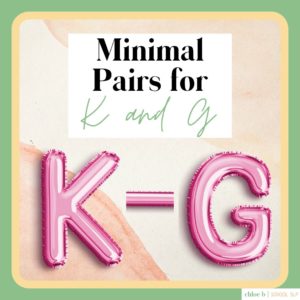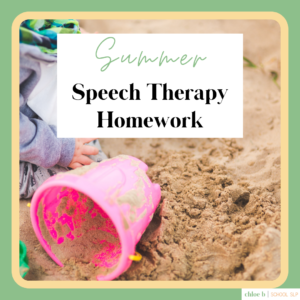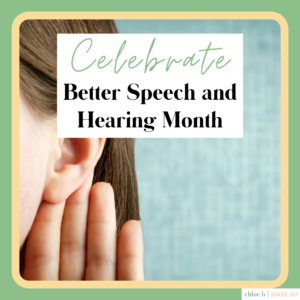If you’re a speech-language pathologist, then you are probably a big believer in using materials that facilitate a lot of language/speech opportunities! Open-ended play can be perfect for this, especially if it involves the child building something, needing pieces/help, or being able to describe a scene.
In fact, a great open-ended material to use in therapy is play-dough! I wrote a blog post about it that you can read here. If you’re looking for another fantastic material for your speech therapy toolbox, then I highly recommend using LEGO® blocks!

**This post may contain affiliate links. LEGO® is a trademark of the LEGO Group of companies which does not sponsor, authorize or endorse this site”.
I get it. LEGO® bricks can be a mess sometimes. The kids spill the whole box on the floor and you’re jumping around trying to avoid stepping on them as if you’re playing a game of “the floor is lava.” BUT, there are things you can do to prevent that from happening. Hint: limit the amount of blocks you give your clients! See number 3 for more on requesting!
Another bonus is that LEGO® blocks are made of plastic! That means you can easily sanitize them between sessions without losing the integrity of the material. Win for COVID-19 precautions!
The colorful blocks are so fun – my students/clients in all settings love love love them! They are engaging, work on fine motor skills, and can be used to target any goal for speech – language – fluency – cognition – voice – ANYTHING!
I’ll prove it to you now! Here are 8 Ways to Incorporate LEGO® Blocks in Speech Therapy!
1. Reinforcement for Trials/Tasks
You can do this by setting up a system by colors, type of block, or adding numbers/stickers to each block. For example:
Articulation – If they add a LEGO® block to their creation and it has a number 3 on it, then they have to say their target sound/word/phrase/sentence three times.
Language – If they add a block that is yellow, then they have to do the ‘yellow task’ which is pronouns/plurals/verbs/whatever! OR If they complete xyz language task, then they get to add a block of their choice
This method is ideal for group therapy, even mixed groups. The kids are motivated to earn more blocks so that they can keep building their design. Because you might be adding extra items to the blocks (numbers/stickers/whatever) then you may need the bigger blocks like these –


2. Build-A-Sentence
Need some new ideas to target syntax in speech therapy? Try writing words on the blocks! Your clients can rearrange the words over and over again as they try to create grammatically correct sentences. You can even teach lessons on parts of speech and categorize your words accordingly. For example, all nouns could be blue, verbs green, prepositions red, etc. This can provide a nice visual for students to understand their different roles in sentence structure.
3. Requesting / Commenting
A great way to incorporate goals for requesting and commenting is to use a common therapy tactic of withholding! You can leave a box of LEGOs® out for the child to see, present it as a possible activity they can choose, or draw attention to it by talking about the box or excitedly shaking it. Once it becomes desirable, you can scaffold support as needed to prompt a request. From there, you can offer only a few pieces at a time. The client can work on requesting, and as he/she builds a creation, you can model commenting. You can also create your own LEGO® structure and encourage your client to comment. It works even better in a group setting when the kids can comment on each other’s masterpieces!
4. Answering Questions
So many times throughout our therapy sessions, we SLPs ask our clients questions. Maybe we’re directly working on WH questions, maybe we’re trying to target a particular skill, or maybe we just want to see if they’re paying attention! 🙂
Often, I ask questions to my fluency or artic kids just to get them talking and see what happens and what we can shape. It’s hard when we ask abstract questions. I like to use picture scenes and real-life materials to make more concrete questions during my speech therapy sessions.
With LEGO® blocks, you don’t have to use boring 2-D picture scenes! You and your students can create amazing real-life scenes (with characters even acting out a story!) and then you can ask them all sorts of questions about it!
5. Describing / Expanding Utterances
Almost all of my language kiddos have describing goals at some level. Descriptive language skills are so important for enriching vocabulary, creating various sentence structures, and improving overall writing ability!
I want my kids to improve in both quality and quantity. So with LEGO® blocks, we can create a picture scene and then I have my kids describe it using the Expanding Expression Tool by Sara Smith (green-group, blue-do, etc.) They can also practice describing each other’s LEGO® creations or they can play a barrier game with it and guess what the other kid built! So many possibilities!
You may want to use the smaller pieces for ideas #5-8! Like these –


6. Story Retell / Main Idea
The set up for this involves you creating a story on the fly or acting out a book/fairy tale. I love to make up stories, so I will use the LEGO® characters to act it out. Once you’ve told the story, you can work on story elements such as character, setting, problem, solution, etc. You can also tackle story retell or main idea! Sometimes the visual LEGO® scene provides just enough support to help your students with this skill!
7. Social Skills
Social skills can be targeted anywhere doing almost anything, but play is a great time for kids to work on their social skills! If your clients are having to share LEGO® blocks or people, then they will have to continuously interact with each other. You can also encourage them to build something together which generates lots of conversation and is a great chance to work on any social skills!
Another idea is to use the blocks to act out different social scenarios. I do this with a student a lot! We act out previous issues and see if we can do things differently in LEGO® world using the strategies we’ve learned.
8. Language Sample / Conversation Speech
Last but definitely not least is using LEGO® blocks to facilitate conversation speech and/or collect a language sample! This can be great for any goal you’re working on because every goal needs to be generalized! It’s great if you’re client has met his or her goal at the word level, but can they use correct past tense verbs or their /s/ sound whenever they’re speaking in conversation?
Conversation can be awkward and hard without something to talk about. Create a LEGO® scene or have them create one and then talk away!
Well there you have it! 8 Ways to Incorporate LEGO® blocks into speech therapy! I hope these ideas are helpful as you work with your kids! LEGO® makes everything more fun and engaging! I’m confident you and your clients will have a blast!
Have any other ways that you use blocks in speech therapy? Let me know in the comments!
xxx *hugs*
Emily





2 Responses